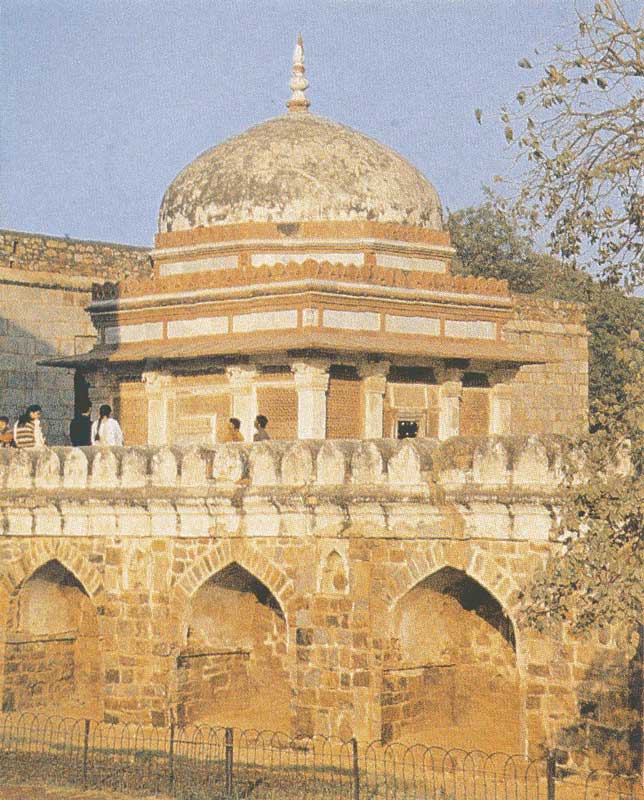
|
|
Qutb Complex, - Imam Zamin's Tomb

The gateway through which the visitor enters the Qutb area is in fact, the entrance to a sarai of the late Mughal period. To the south-east of the Ala'i-Darwaza and approached through its eastern gateway is the small attractive tomb of a 15th century Sufi saint Imam Muhammad Ali, better known as Imam Zamin, who was a native of Turkestan and came to India during the reign of Sikandar Lodi (1488-1517). He was a member of the Chistia sect, a Sayyid descended from Hasan and Husain.
It is a much later structure, dating from the time of the Mughal emperor Humayun. Apparently Imam Zamin discharged some important duties in connection with the Quwwatu'l-Islam mosque. He built his tomb according to an inscription in 944 A.H. (1537-38) and died a year later.
The tomb, 7.3m square, is a simple structure in the Lodi style. It is surmounted by a sandstone dome rising from an octagonal drum, and is decorated with a double row of kanguras and marble paneling above the chhajja. The spaces between the twelve square pilasters supporting the superstructure are filled in with a geometrical jali of red sandstone in all but the central bays of the west and south sides.
These contain a mihrab and an entrance doorway, both wrought in marble. Over the latter is an inscription in well-formed Naskh characters recording the name of the saint. Marble is also used in the cenotaph and as a decorative relief in the interior; the radiating ribs of this material in the sandstone dome being a feature of particular interest. The whole structure of sandstone was originally covered with finely polished stucco, of which a considerable portion is still extant.
|
|